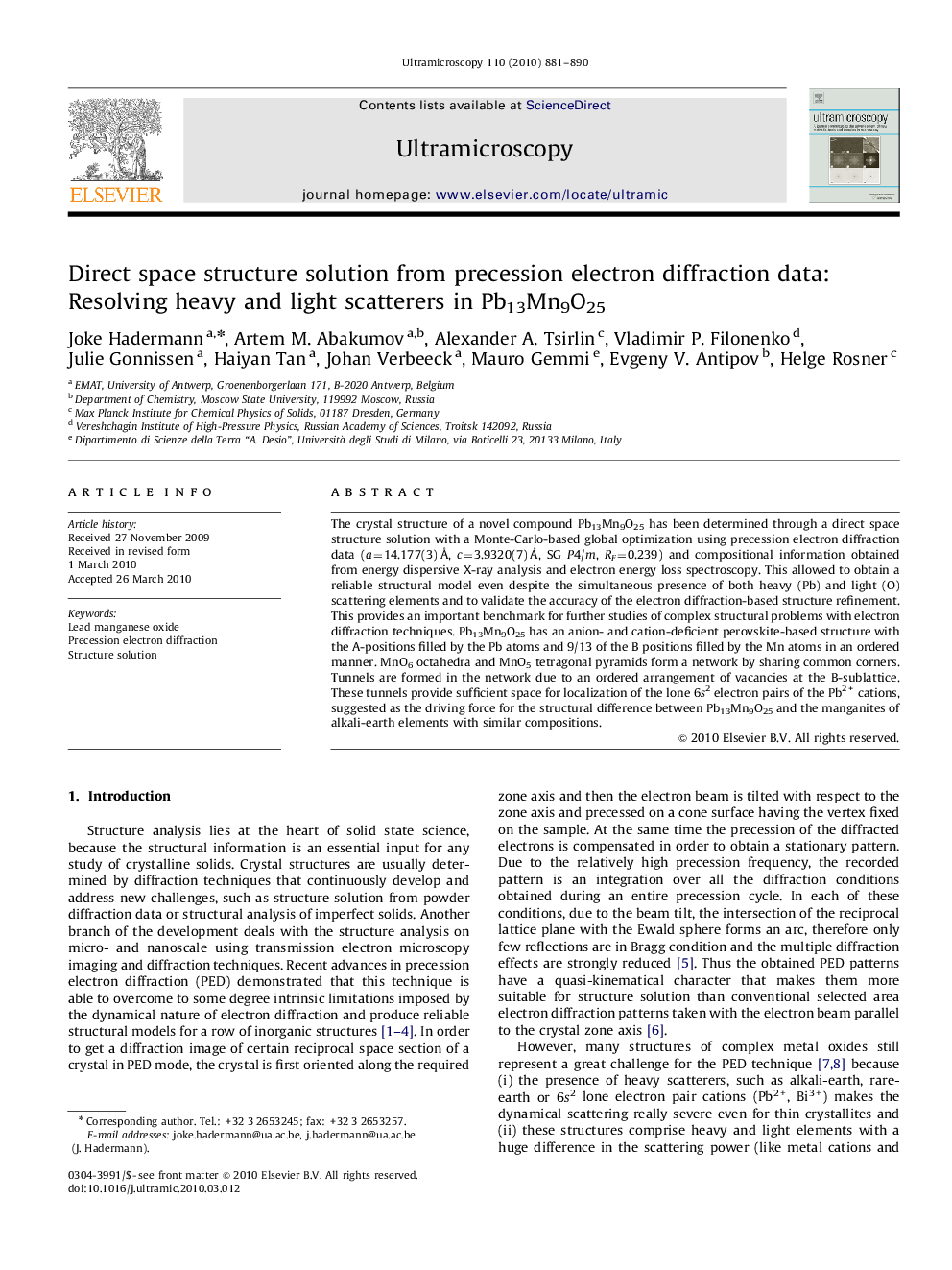| Article ID | Journal | Published Year | Pages | File Type |
|---|---|---|---|---|
| 1678332 | Ultramicroscopy | 2010 | 10 Pages |
Abstract
The crystal structure of a novel compound Pb13Mn9O25 has been determined through a direct space structure solution with a Monte-Carlo-based global optimization using precession electron diffraction data (a=14.177(3)Â Ã
, c=3.9320(7)Â Ã
, SG P4/m, RF=0.239) and compositional information obtained from energy dispersive X-ray analysis and electron energy loss spectroscopy. This allowed to obtain a reliable structural model even despite the simultaneous presence of both heavy (Pb) and light (O) scattering elements and to validate the accuracy of the electron diffraction-based structure refinement. This provides an important benchmark for further studies of complex structural problems with electron diffraction techniques. Pb13Mn9O25 has an anion- and cation-deficient perovskite-based structure with the A-positions filled by the Pb atoms and 9/13 of the B positions filled by the Mn atoms in an ordered manner. MnO6 octahedra and MnO5 tetragonal pyramids form a network by sharing common corners. Tunnels are formed in the network due to an ordered arrangement of vacancies at the B-sublattice. These tunnels provide sufficient space for localization of the lone 6s2 electron pairs of the Pb2+ cations, suggested as the driving force for the structural difference between Pb13Mn9O25 and the manganites of alkali-earth elements with similar compositions.
Related Topics
Physical Sciences and Engineering
Materials Science
Nanotechnology
Authors
Joke Hadermann, Artem M. Abakumov, Alexander A. Tsirlin, Vladimir P. Filonenko, Julie Gonnissen, Haiyan Tan, Johan Verbeeck, Mauro Gemmi, Evgeny V. Antipov, Helge Rosner,
